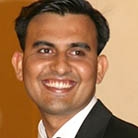Embedding Innovation in Organizational DNA: The Winners of the Innovating Innovation Challenge
What company today doesn’t put innovation at the top of the agenda? Yet how many companies have devoted the energy and resources it takes to build innovation into the values, processes, and practices that rule everyday activity and behavior? Not many, as we argued when we launched the Innovating Innovation Challenge in October.
That disconnect isn’t due to lack of human ingenuity or resources. It’s a product of organizational DNA. Productivity, predictability, and alignment are embedded in the marrow of our management systems. Experimentation, risk-taking, and variety are the enemy of the efficiency machine that is the “modern” corporation. Of course, it’s variety (and the daring to be different) that produces game-changing innovation.
So, how do we make every management process a catalyst, rather than a wet blanket, for innovation? How do we make innovation a true core competence? While we didn’t expect to find many organizations that had woven innovation into every element of their management model—from hiring and training to tools and metrics to values and leadership to experimental methodologies to headspace and elbow room—we did hope to discover individuals and teams making real progress on important pieces of the puzzle.
A few months and 140 superb contributions from a diverse group of in-the-trenches management innovators later, we’ve zeroed in on a set of winning entries that represent some of the world’s most daring and comprehensive approaches to making innovation an everyday, everywhere capability.
Today, we’re delighted to announce the ten winners of the Innovating Innovation Challenge, the first leg of this year’s HBR/McKinsey M-Prize for Management Innovation. But first, we’d like to acknowledge, again, the 24 finalists, whose superb stories and hacks made for some wrenching decision making. A huge thank you to all of the challengers with the imagination and daring to take on the status quo—and the generosity to share what they’ve learned in the process.
The Winners of the Innovating Innovation Challenge (in alphabetical order)
Managing for 21st Century Crime Prevention in Memphis
Story by Toney Armstrong, Memphis Police Department
An inspiring story of transformation from a traditional bureaucracy to a vibrant innovation culture in which the insights and observations of every individual from edge to edge not only matter, but produce immediate impact and make the organization continuously smarter.
Democratizing Entrepreneurship: Village Capital's Peer Selection Model
Story by Ross Baird, Village Capital
An exciting and powerful model for cultivating, evaluating, funding, and growing new ideas—and a detailed recipe for unleashing the power of peer review in any organization.
Case Coelce - Inspiring Innovation for Traditional Work Environments
Story by Luiz De Gonzaga Coelho Junior, co-authored by Odailton Arruda, Coelce
An honest and human account (dead ends and all) of developing a continuous innovation capability in an electricity distributor in the poorest region in Brazil.
Fail Forward
Story by Ashley Good, Engineers Without Borders Canada
The “Failure Report” is a refreshing and bold practice that takes the tired mantra of “embracing failure” and turns it into a way of life for an organization—and a provocative invitation to all of its partners.
Sustainability as Innovation Strategy: How Sustainability and Innovation Drive Each Other and Company Competitiveness at Danone
Story by Monica Kruglianskas, Danone, co-authored by Marc Vilanova, ESADE Business School
This story unpacks Danone’s singular approach to embedding sustainability in its innovation agenda and innovation in its approach to sustainability. A case study in how to bring values to life, unleash the spirit of experimentation, and scale new ideas and practices.
Democratize Innovation - for sustained innovation culture
Story by Lalgudi Ramanathan Natarajan, Titan Industries
A multiplex approach to layering in innovation capabilities from the shop floor up in India’s largest jewelry and watch retailer. The Titan story is a down-to-earth account of true social innovation—both in terms of the process and the result.
Whirlpool’s Innovation Journey: An on-going quest for a rock-solid and inescapable innovation capability
Story by Moises Norena, Whirlpool, co-authored by JD Rapp
The state of the art when it comes to developing innovation as a core competence. Whirlpool changed its organizational DNA to embrace innovation at the deepest level and unpacks the journey in generous detail here.
Unleashing Inclusive Innovation at Cisco
Story by Kate O’Keeffe, co-authored by John Marsland, Carlos Pignataro and Lisa Voss, Cisco
A thorough and instructive account of working every lever and animating an entire organization—from the bottom up and the top down—to embrace innovation.
Project Bushfire - Focusing the might of an entire organization on the Consumer & Customer
Story by Stephen Remedios, The Stephen Remedios Company, co-authored by Aswath Venkataraman, Sandeep Ramesh, Shruti Kashyap and Shashwat Sharma, Hindustan Unilever
A compelling, homegrown practice for jolting a vast organization into tight communion with the marketplace—and a recipe for seeing around corners, energizing every last person in the company, and closing the gaps between “sense” and “respond.”
Is managed innovation an oxymoron?
Story by Kumar Sachidanandam, Cognizant
A comprehensive and illuminating story of how one organization tackled the über challenge of building innovation into its management model—with powerful insights on wrestling with the right big questions.
Congratulations to all of the winners and the organizations behind them! We’ll be unpacking many of these stories and others from the Innovating Innovation Challenge here in the weeks to come. In the meantime, stay tuned for the launch of the second leg of the HBR/McKinsey M-Prize here in early March.
You need to register in order to submit a comment.
One of the big challenges concerning the leadership involves shifting from the leadership of a few to the leadership of many, from giving accountabilities to individuals to empowering teams. Such a shift is necessary in order to optimize the commitment, the cooperation, and the collective creativity company-wide, and to establish the nimble and networking collaborative mode of management that enables the innovative enterprises to outperform.
Implementing major changes requires that the innovators share a strong will, and that they show the way. They say two heads are better than one, but synergizing the heads of many does require a master plan, such as the one I present in “The Innovative Enterprise”. (*) Accordingly, the business-leaders form a web that works in a collaborative mode of management as outlines hereafter.
-1- Collaborative management should start with collaborative strategic planning so as to benefit from all available insights, and – most importantly – to get all the life-forces of the organization involved and committed. To this effect, I have developed the Model of the Two Rings, which gets all the life-forces of the organization at different levels and in different positions to collaborate on the strategic deployment, and on the organizational deployment.
The Model of the Two Rings lays out the string of steering process that the senior management uses in order to lead the organization to do the right thing, and the string of business processes that are delegated to the operations management to do the thing right. The last of the steering process, the process of strategic and organizational deployment, cascades the strategic goals down a few levels, but - at each level - it lets the teams propose the strategies and the means. When the process has run the full course top/down, it reverses and works it way back up step-by-step to get approvals and resource allocations. Then, the CEO finalizes the strategic process, and he/she sets the objectives and means, underscores the synergies, and it assigns the projects.
Working top/down and bottom/up, inside/out and inside/in, the Model of the Two Rings sets a strong and organic base for the collaborative mode of management, which sets the innovative enterprise apart from the traditional organization. Moreover, it gets all the life-forces of the organization to work together on implementing the shift to the collaborative mode of management.
-2- The strategic deployment defines the business-projects, and it assigns them first to the business-units, and within these business-units to the self-managed teams. Thusly, whole the business is managed project-by–project, and the self-managed teams interact with one another in the frame of networks.
-3- At each level of the strategic deployment, the teams have to get the resources and secure the collaboration of other teams. The self-managed teams work out within their networks the distribution of the roles, of the responsibilities, and of the resources. Each self-managed team has a leader who acts essentially as a primus inter pares, as a coach, and as a coordinator.
-4- The innovative enterprise requires a special system of reviews-evaluations-rewards. The reviews enable the team-members to improve the performances of their team, as well as the performances of the networks they interact with. So, the reviews are also a social event that should reinforce the team-spirit.
The traditional performance evaluation system that fixates the results on the tangible assets is incompatible with the innovative enterprise, which relies on its intangible resources in order to outperform. So, the advocated performance evaluation system is based on an original scheme, the Returns on Total Resources, which duly takes into account both the tangible as well as the intangible resources.
The performance evaluation system is based firstly on the evaluation of the performances of the self-managed teams, and then as appropriate on the performances of individual team-members. Finally, the rewards are team-based, but the team-members may design members that deserve special rewards.
-5- The modular, mobile, and mutant structure of self-managed teams is supported by the conference of the business-unit directors and by the conference of the chiefs of the shared services, which cover the traditional management functions, and the strategic competencies - like innovation, talents, alertness - that the business strategy has singled out as essential to a sustainable competitive edge.
The self-managed teams are the first level of control, their networks the second level, and the business-unit directors and the chiefs of the shared services are the ultimate level of controls. Thus, the load of the management is more evenly distributed, and the senior management can focus on leading the enterprise to a successful future.
(*) The aforementioned outline is very succinct, and I invite the readers to check out my new book “The Innovative Enterprise - how to transform a traditional organization in an innovative networking enterprise" Create Space 2013.
- Log in to post comments
First, congratulations to all the fabulous teams that have won the challenge.. The work that you have done is stupendous indeed..
Also, i can see that all the winners are from the folks who submitted their stories.. No winners from the folks who submitted hacks.. Was this intentional or was it purely due to the quality of hacks that were received.. Just curious to know..
- Log in to post comments
Congrats to all winners! Bravo - you do us proud!
Would like to respond to Polly's title and dynamite question: "So, how do we make every management process a catalyst, rather than a wet blanket, for innovation?"
Did you know that a newly discovered protein - Kinase A+ protein literally reacts against DNA and can visibly change hereditary problems we once thought of as horrid fate! How much more so - can lived innovation revolutionize broken practices!
It takes acting together repeatedly though. Doing novel approaches in the opposite direction of tradition, will cause that shift to occur. It's quite amazing what results by way of sustainable change when we act together.
Perhaps this latest list of deserving winners can help new shifts occur as the MIX acts in original directions opposite of broken traditions we once thought of as mete fate to live with:-) If so, count me in! Best, Ellen
- Log in to post comments
Modern innovation and the advent of technologies has really changed the world. The adaption of this technologies is must if you don't want to lag behind in this race. It helps you in improvement as well as modernization.
business telephone line rental
- Log in to post comments
















